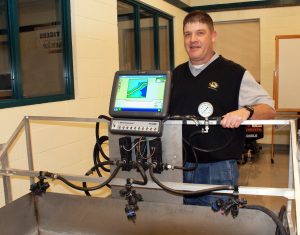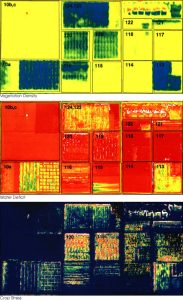
An online and classroom program to train agriculture students and update professionals in the latest aspects of precision agriculture will be expanded this fall at the University of Missouri.
The program started last year with two content areas: Intro to Precision Ag and Future Trends in Precision Ag. For the spring semester 2015, Data Management and Analysis in Precision Ag, and Economics in Precision Ag will be added.
With the course additions, undergraduate students will be able to get a precision agriculture emphasis as part of their agricultural systems management degree. Persons who are employed can take the same training online and earn a certificate, which will enhance their value in the marketplace.

Precision agriculture is the practice of using remote sensing, soil sampling and information management tools to improve production. It relies on technologies like satellite imagery, information technology and geospatial tools.
The goal of precision farming is to improve farmers’ profits and harvest yields while reducing the negative impacts of farming on the environment that come from over-application of chemicals.
Skills Industry is Looking For
Precision ag is used more and more in local farming operations, said Leon Schumacher, professor of agricultural systems management. “Students completing a certificate or degree program in precision ag will be more competent in their own farm operations or will be able to obtain positions such as precision ag technicians at implement dealerships, crop specialists, nutrient management specialists, precision ag department managers, precision agronomists and precision farming coordinators,” he said.
“Industry is looking for these skills,” said Kent Shannon, a natural resource engineering specialist for University Extension. “The certificate proves that they are proficient in these emerging areas.”
Schumacher said that rapid technological advances in such mapping technologies as Global Positioning Systems (GPS) and Geographical Information Systems GIS) have been a boon to agriculture, but the number of proficient practitioners has not kept up.
Agriculture With Fewer Errors
The new data management component of the training will detail how to minimize errors while collecting spatial datasets. These datasets may include yield data, soil chemical and physical properties with real-time sensors, and soil nutrient data from grids or management zones. The course then continues with a section regarding data analytical techniques such as interpolation. The second half of the course will focus on writing prescriptions based on actual data obtained from industry leader experts.
The new economics component will show how precision agriculture technology can be used to benefit a farm operation’s financial sustainability. There will be discussion of various types of farm operations and currently available technology. The course continues by considering cost factors that create barriers for farm operators to adopt precision agriculture. The second half of the course will focus on developing a plan to implement various technologies into an existing farm operation and draft a business plan for integrating GPS, GIS and other types of tracking and monitoring.
The academic courses will be offered in the same way as other university courses for enrolled students. The course for others will be offered online through University of Missouri Extension with a two-day hands-on lab.